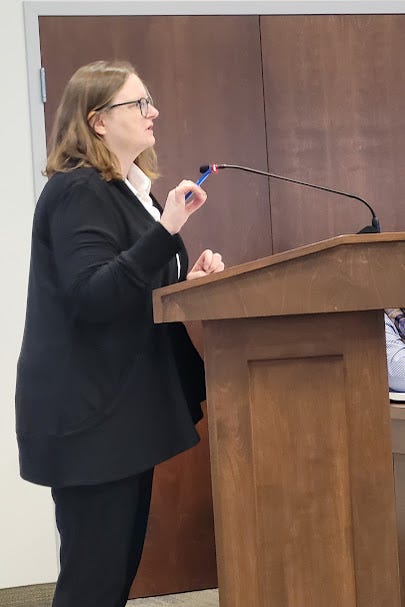Developers 1, Conservers 0
Ford whacks conservation groups. Local authorities to disappear under plan to speed development permits
There was a loud thunk on Friday morning heard across the province in the offices of 36 conservation authorities.
The sound was Doug Ford dropping his size 12 boot on those offices, which learned they will be gone in about a year, replaced by seven regional agencies. Instead of being run by municipal appointees and largely funded by our property taxes, the province is taking over.
This wasn’t a surprise to anyone in those offices. The Ford government has been cutting funding and telling the conservation groups what they should and shouldn’t be doing ever since taking office.
The changes will have an impact on Trent Hills where we are covered mostly by Lower Trent Conservation, but also by the Crowe Valley and Otonabee Region authorities. Councillor Gene Brahaney is currently chair of Lower Trent’s board and councillor Rick English is also a member. Deputy Mayor Mike Metcalf represents the municipality on both the Crowe Valley and Otonabee Region boards.
By 2027 municipal control will be gone and a department responsible for all the watersheds flowing into the eastern end of Lake Ontario will be reporting to a new body – the Ontario Provincial Conservation Agency.
Its goal is to speed approval of new houses and reduce red tape by centralizing standards and controls. The new agency will allow use of digital technology that conservation groups currently cannot afford, the province says.
The fact major changes were coming was clear last June when Hassaan Basit was named the province’s first Chief Conservation Executive.
The former head of Conservation Halton left a job as Burlington’s chief administrative officer to take over the conservation authority issue for the government.
“Alignment with the provincial priorities is a goal,” he told reporters at a news conference on Friday after Todd McCarthy, Minister of the Environment, Conservation and Parks, announced the consolidation.
The top priority is speeding up development permits and making it easier for builders and property owners to do what they want. Conservation and protecting the environment come further down the list, said McCarthy, who is MPP for Durham.
He said 130 municipalities, including Trent Hlls, now deal with two or more conservation authorities and the new system will reduce that to 48.
The conservation groups were established in 1946 as municipal bodies focused on protecting local watersheds. Their approval is needed for permission to build or renovate, especially in environmentally sensitive areas.
For most of us, our contact with conservation agencies comes only when we got for a hike or swim in Seymour or stroll along the creek in Goodrich/Loomis conservation area. But developers or anyone wanting a severance or building permit sees the other side of the operation, the bureaucratic and cautious one that often says no or asks for more study.
McCarthy told the news conference that the province will consult about the changes over the next year and they will take place in early 2027, once the current terms for municipal politicians are completed.
McCarthy’s comments and a ministry news release didn’t explain how the new system will be managed and financed or provide a budget for the new agency. I’ve asked the ministry for those details but have received no response. If/when I get answers, I’ll pass them on. Don’t worry, I’m not holding my breath.
The restructuring of conservation authorities is not happening in isolation. At the same time, the province is revamping rules about drinking water safety with changes announced earlier in October.
“The Ministry of Red Tape Reduction said the process in place to change the rules around drinking water is “overly complex and slow.” It said reforming that process will support housing construction and development, while keeping water safeguards in place,” reported The Narwhal, an environmental news website.
In the news conference, which you can watch on YouTube, McCarthy insisted that the consolidation will not result in job cuts and suggested the dispossessed CEOs and senior managers will be redeployed as front-line workers.
Reporters were skeptical and repeatedly asked him to explain how this could be carried out since at least 29 current senior executives will be left jobless. Those executives no doubt have contracts that set out how much severance they will be owed when their jobs are restructured, but McCarthy continued to deny this reality.
McCarthy mentioned that he’d been a lawyer for 30 years, so I presume he’s read a contract or two and perhaps even passed a course on contract law. A cynic might guess that he threw out this red herring knowing and hoping that the reporters would focus on it rather than asking other questions.
When he was CEO of Conservation Halton in 2023, Basit earned $296,000. CEOs of other large conservation authorities are paid at that same level. Rhonda Bateman, Chief Administrative Officer of Lower Trent Conservation, earned $126,000 in 2024, according to the Ontario Sunshine List.
Rough math, 30 executives each owed $500,000, suggests a severance cost of at least $15 million, plus the real estate and office costs of creating seven new agencies. Clearly the consolidation will cost millions, which may be a good and worthwhile thing but it’s tough to know when the province won’t honestly answer questions about it plans.
You can read all Trent Hills News stories anytime on the website.





I doubt we'll ever be able to figure that out. The current budgets aren't consolidated so you'd have to research and put them all together, then compare with whatever the Ford government deigns to tell us about the new situation in a couple of years. Transparency is not an attribute of this government, or most others.
I hope it is really going to save money by cutting out a number of the conservation authorities.